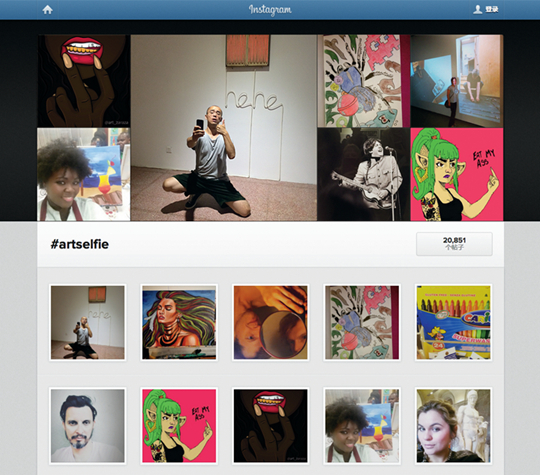SELFIE
| July 23, 2015 | Post In 2015年6月号

The selfie is more than just a photograph of the face or body—it is a body of information, and of idealized self-realization. The selfie allows for the quick and easy actualization of the self in the world, which, when disseminated on WeChat or Weibo, forms part of a social self-portrait— a window into issues of self-identity.
A selfie is a way of marketing the self. The image is created through light, perspective, apparel, retouching software—tools that underscore wealth, status, and identity. From a technical perspective, there’s no difference between selfies and advertising: both work to achieve a maximum degree of control in order to meet aesthetic criteria and win over a certain demographic (market demand); both strive for polish to enhance a selling point (sexy, innocent, or rebellious); and both strengthen relevant elements eliminate irrelevant ones to promote targeted content. In this way, the selfie, as a means of personal advocacy, creates and maintains a unified identity. Since the selfie may or may not be attention-seeking, it must also resonate with group identity—beyond an idealized individual way of being, it is a dream of universal existence. It is inherently conservative, passive, safe.
A selfie is captured on screen and seen by others as a product of leisure time—it is a medium of human slavery. The production of the selfie is the production of artificial media content. Viewers engage with it as with any other manufactured content. The media no longer produces content, yet still the process of marketing and production is completed. The media subconsciously exploits time and labor, an organism of ideological control organism with the selfie as its circulatory system.
Text by Yang Zi
Translated by Maya Rudolph


